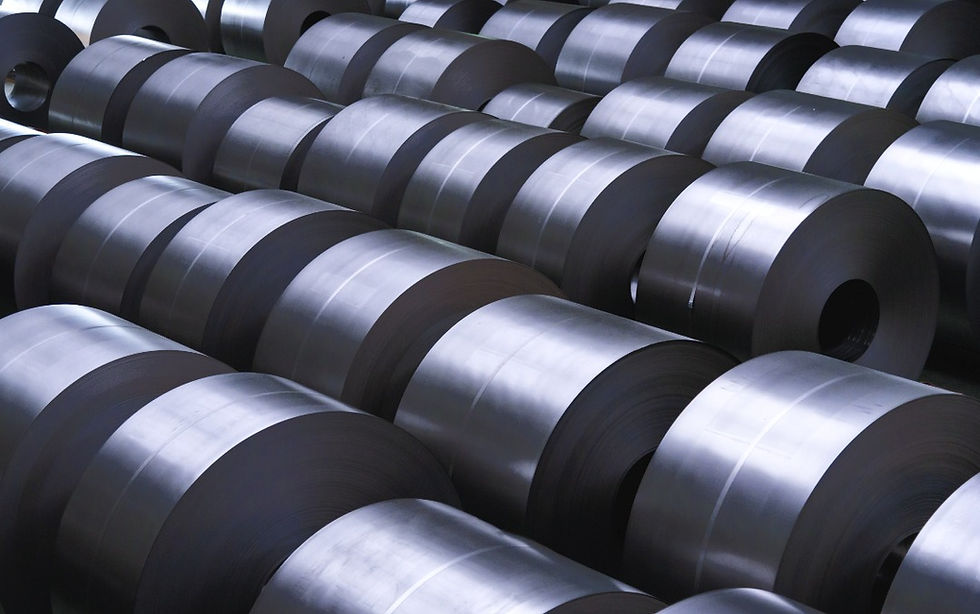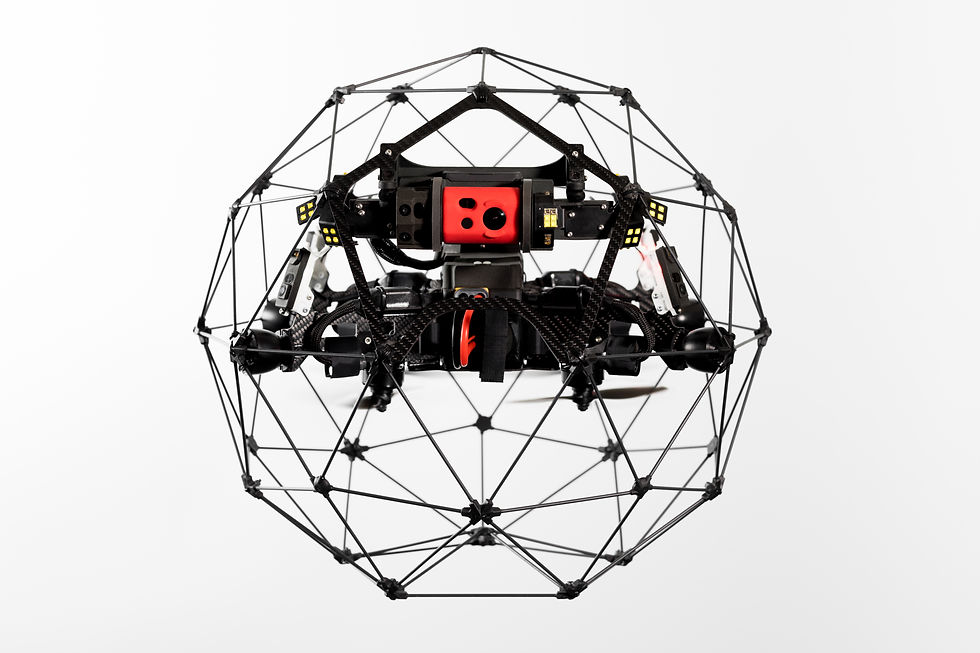Drone Technology Set to Replace Manual Inspection in Confined Spaces
- Team Volar Alta

- Jul 8, 2022
- 5 min read
Updated: Sep 28, 2024

When legacy companies speak about full automation, many often wonder if this is a vision for the far future or already a reality. After interacting with many industry experts in the last few years, we at Volar Alta can confirm that the big change is already here, slowly creating ripples where they are most needed. Take confined space inspection, for instance. Industry giants are taking huge steps to adopt and promote automation trends - UAV being one of them. After all, why wouldn’t companies want to achieve the perfect performance of assets in a non-risky and a cost-effective way? Efficient asset maintenance on time is instrumental in delivering high-quality results for all industries.
Think tanks and thought leaders have been emphasizing health and safety-related risks associated with manual inspection in confined spaces for years. Their consistent efforts indeed helped companies put the right measures in place such as training materials, safety kits, better equipment, timely shutdown, PPE and more. However, the magnanimity of the problem always outmanoeuvred the solutions, demanding a more robust and technologically advanced solution against the challenges of traditional methods.
The technologists, as always, by automating the whole process of inspection using drones, put forth reliable and impressive solutions making decision-making easier for stakeholders.
Before we understand more about the usage of drones in confined space inspection, let’s look at why manual inspections are becoming a thing of the past.
Why are manual inspections outdated?
Confined spaces or assets in various industrial plants are hard to access. These spaces are challenging and hazardous due to risky gases, chemicals, and heat. At the same time, when a human enters these spaces for testing or inspecting, the inner environment poses threats related to falling, tripping, suffocating, and inhaling dangerous substances. Due to these common challenges, expecting an optimum performance from ground workers is unfair and in some cases, inhumane too.
The equipment and protective gears required to protect the workers are expensive and unreliable. Erecting scaffolding takes days in assets such as chimneys, cyclones, kilns, etc. Most assets are turned off for the whole manual inspection process increasing downtime at plants. Manual inspections may delay maintenance and make it a costly affair.
One of the cement industry experts shared with us that they would spend a minimum of 4-5 days conducting an inspection of a confined asset at their plant. The inspection required scaffolding, ropes, head-mount cameras and protective gears that cost the company crores yearly. Imagine erecting scaffolds manually in an over 50 ft chimney or tank and then workers manually checking for defects in challenging positions.
Here is a list of challenges with manual inspection:
Threat to human safety and health
Expensive and time-consuming
Labour intensive
Less efficient and more downtime
Use of paper for inspections
Inadequate visual evidence
Delayed permissions and compliance-related issues
Delayed maintenance
Delayed action planning
Affected operations and overall performance
Understanding drones better
Today industrial drone inspection is a preferred choice for leaders across the globe. Drones reduce the need for humans to enter dangerous zones. Drones can inspect hard-to-reach spaces, reduce maintenance costs and overall combat the aforementioned challenges.
Volar Alta uses Flybility’s Elios for internal inspections in India. The drone has handsome features such as high-resolution photo cameras, LED dust-proof lighting, thermal vision cameras, distance sensors and easy navigation technology. Visual images created in dark spaces provide huge actionable details to our clients. Naturally, confined spaces require drones which can be controlled beyond the line of sight. Elios 3 has a collision-tolerant feature that makes flying smooth. The live feed from these drones provides full visibility into the asset so that corrective actions can be planned without delay.

(Still from a chimney inspection done by Volar Alta using Elios-2 for a cement company.)
In a way, drones can do complete maintenance. According to some estimates, not all inspections lead to a need for maintenance. In fact, 80-90% of inspections conclude that maintenance is not required. In these cases, drone inspections are enough. However, in the remaining cases, using the data and assessment from drone inspections, workers can go inside the space to solve a particular problem. Their time spent inside is reduced significantly with drones.
Due to the increase in automation across the globe, companies like Volar Alta are able to provide cost-effective drone solutions. These drone services are scalable, flexible and adaptive without much hassle. Data gained from drone inspection is further put in reports for companies to assess and track. For companies looking to take the first step, adoption is fairly intuitive and straightforward with Volar Alta.
According to a research report, the global inspection drones for confined spaces market was valued at 795.12 million USD in 2019 and is expected to reach 1,936.32 million USD by 2027. This increase is with a CAGR of 12.1% from 2020 to 2027.
Big benefits of using drones
Drone inspections can reduce maintenance costs by 80-90% and increase the frequency of confined space inspections. They are futuristic with a scope of high scalability and provide a remarkable competitive advantage to companies that want to promote automation. They also help companies create a future-ready task force. In addition, this technology opens doors for collaboration and partnerships between drone manufacturers, service providers and industries - leading to overall market growth.
1. Comprehensive data
Collecting data through manual methods requires papers or sheets. Sharing this data with stakeholders on time through emails is also a hassle. With access to live footage on drones, data can now easily be maintained in software for further decision-making and action planning. As drones can go very near the affected area, the information they gather about faults and anomalies is more comprehensive and usable.
2. Eliminates errors
Drones are far more efficient and reliable for data collection. They are quick to pick up faults and anomalies. Drones eliminate the risk of errors and can reach far-end places that are otherwise tough to reach by humans.

(An anomaly detected by Elios-2 inside a chimney.)
3. Reduces cost
Drones save the money traditionally spent on scaffolding, ropes, head-mount cameras, data managing software, labour and inspection training.
4. Increases productivity
Drones reduce the time spent inside an asset for maintenance and eliminate the efforts put in preparation for manual inspection. This helps in saving time for other crucial tasks.
5. Reduces downtime
Downtime can mean loss of revenue or opportunities missed for companies. Some inspections require the asset be shut down for a much longer time frame as opposed to drones. With drones, there are no additional challenges such as time spent for erecting scaffolds for example. Drone enhances the turnaround time significantly.
More advantages :
Easy to transport
Early identification of defects
Reduces asset immobilisation
Improves visibility into assets
Faster inspections
Mitigates labour work
Reduces labour costs
Saves liability insurance
Drone inspections are versatile. Their usage and application are not limited to visual and confined space inspections. They can be used in agriculture for 3D mapping and monitoring of crops and livestock. Each industry can benefit differently from drone inspections.
To know more about the use cases of drones for your industry, contact Volar Alta at niharika@volaralta.com.



コメント